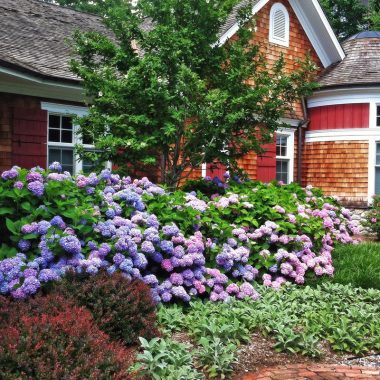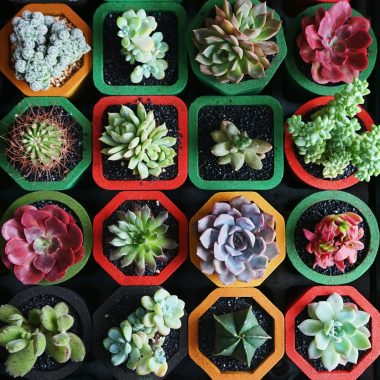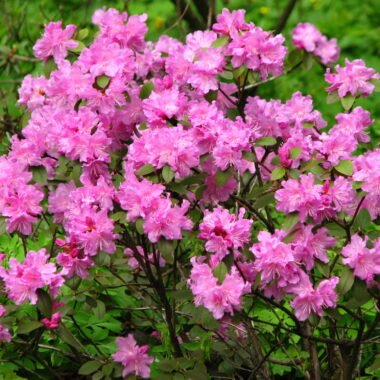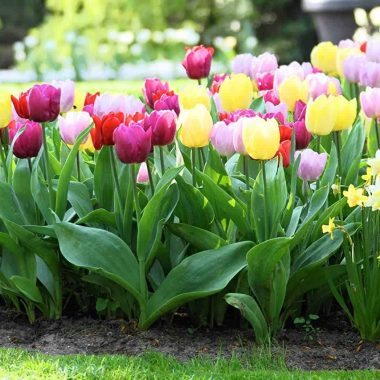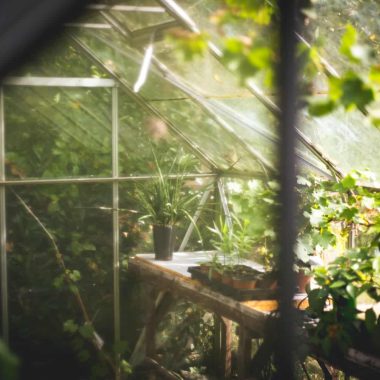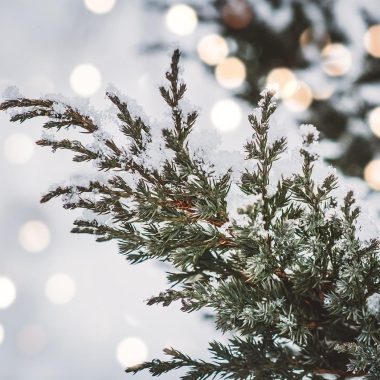It shouldn’t be surprising that Washington has many different types of shrubs.
The state boasts a diverse climate, ranging from humid and warm to cool and dry, suitable for some of these shrubs.
Shrubs are important parts of landscape beautification, and they can also be used as temporary decorations on screens, background plantings, and fences.
While some of them have green leaves, others are distinguished by flowers.
With the addition of shrubs, a lawn with flowerbeds and trees can become a complete, organic gardening habitat.
Besides, you need them if you want your landscape to be aesthetically and ecologically complete!
In addition, they can help prevent soil and water erosion and be a fuel wood source. Now, let’s look at the types you can find in Washington.
1. Rhododendron

Rhododendron is one of the most popular shrubs in Washington. Like a few other plants, it has contributed to the history of gardening.
When discovered, it became a huge favorite among gardeners, so expeditions were sent to Asia to find new species.
This shrub will beautify your flower beds, hedges, borders, and even slopes with its clusters of deep pink blossoms, adding a subtle fragrance to your garden.
- Size: 4 – 5 feet tall and 3 – 4 wide.
- Conditions: Partial shade or full sun.
- Soil: Acidic soil. Loam or sandy loam.
- Hardiness zone: 5 to 8
- Water: Moderate moisture.
2. Pacific Ninebark
The Pacific Ninebark is among the native types of shrubs in Washington. The term “ninebark” refers to the tree’s shedding, textured bark, which gives the impression that it has nine layers.
Small green leaves and clusters of white blooms emerge in the spring. Its foliage turns yellow and drops in the fall, revealing its attractive bark. Also, it can withstand various conditions, from occasional flooding to severe drought.
The shrub is an excellent choice for streambank and slope stabilization due to its fibrous roots and capacity to grow quickly from live cuttings.
In addition, its shrubby appearance makes it an excellent location for bird nesting.
Finally, the Pacific Ninebark makes a lovely addition to the environment with its white blooms, brown peeling bark, and vibrant fall color.
- Size: 5 – 10 feet tall and wide.
- Conditions: Full sun, partial sun.
- Soil: Clay, loam, and sand. Acidic or neutral soil.
- Hardiness zone : 3 – 7.
- Water: Average.
3. Mock Orange
This is also among the different types of shrubs in Washington. It is a dense, rounded-growing deciduous shrub that features spectacular, cup-shaped, four-petaled flowers in the late spring and early summer.
Mock orange shrubs grow quickly and can grow up to 2 feet yearly. Although they can also be planted in the spring, early fall is the ideal time to do so.
The mock orange shrub earned its popular name because its gorgeous, fragrant flowers resemble orange blossoms. They also contain abundant nectar that attracts butterflies and other insects.
Mock orange shrubs typically require very little maintenance. They rarely have insect or disease problems.
Additionally, established bushes only require watering during drought periods.
- Size: 10 – 12 feet tall and wide.
- Conditions: Full and partial sun.
- Soil: Loamy, moist and well-drained. Acidic or neutral soil.
- Hardiness zone: 4 – 8.
- Water: Moderate.
4. Shallon
Shallon is a leathery-leaves shrub. The foliage is lovely and dark green, occasionally used in floral arrangements. The flowers resemble Manzanitas in form and range from pink to white.
In addition, their fruit has a deep blue color and is tasty. Depending on the local growing conditions, it can grow as a widespread ground cover or a medium-sized shrub. Also, it’s among the different types of shrubs in Washington.
It is a typical coniferous forest understory species with the potential to dominate many regions. Furthermore, it can grow into thickets that are practically impenetrable in coastal locations.
It would make a great addition to a woodland garden on the northern or central coast. The blossoms are attractive to hummingbirds and several kinds of insects.
While the fruits attract various birds and mammals.
- Size: 4 – 10 feet tall and wide.
- Conditions: Partial sun and shade.
- Soil: Clay, loam, and sand. Acidic or neutral soil.
- Hardiness zone: 6 – 8
- Water: Low or Average.
5. Chaste Tree
This deciduous shrub blooms in the summer with clusters of purple flowers. Its leaves have five leaflets arranged in a palm-like configuration, similar to those of marijuana plants.
In addition, the scent of the leaves is comparable to that of the sage herb. The midsummer purple flower clusters resemble those of the butterfly bush. The fruit contains four seeds that look like peppercorns.
Like other shrubs, a chaste tree is best planted in the spring, so it has plenty of time to set down roots before going dormant for the winter. It’s also among the different types of shrubs in Washington.
Although it is a fast-growing shrub that may grow up to 7 feet in a single season, most gardeners maintain this potentially invasive plant at 10 feet or less.
- Size: 3 – 20 feet tall and 3 – 15 feet wide.
- Conditions: Full sun.
- Soil: Loose, well-drained. Acidic, neutral, or alkaline soil.
- Hardiness zone: 6 – 9
- Water: Moderate
6. Snowberry
This is also among the different types of shrubs in Washington. It produces white fruits and pink flowers.
The snowberry’s ovate, rounded, or elliptical leaves are pale green. Also, these shrubs can reach a length of two inches.
It self-pollinates, and clusters of tiny pink blooms appear at the ends of the branches in late spring to summer.
It’s a wonderful addition to various gardens and gives the landscape a magnificent globe shape.
This shrub is low maintenance, and if you plant it, birds will flock for a feast on the drupes. They spread rapidly, and sucker removal is recommended to keep this plant from taking over your garden.
However, all parts of this shrub are toxic to humans.
- Size: 3 – 4 feet tall and wide.
- Conditions: Full sun or partial shade.
- Soil: Clay, sandy or rocky. Acidic and alkaline soil.
- Hardiness zone : 3 – 7
- Water: Regular watering.
7. Serviceberry
Serviceberry is also among the different types of shrubs in Washington. Early in the spring, serviceberry trees produce white blossoms shortly before their foliage appears, providing some of the earliest nectar sources for pollinators.
The five-petaled flowers strongly resemble apple blossoms, although their petals are thinner. Following the display of these blooms, tasty berry clusters develop.
The berry ripens as summer approaches, turning deep red and then purple. The berries can be consumed fresh or turned into jams and jellies and are an excellent substitute for blueberries.
Furthermore, serviceberry trees rarely have problems. Spider mites may appear on the foliage if the summer is unusually dry and hot. However, the impacts are mostly cosmetic and won’t harm the tree’s health in the long run.
Serviceberry trees spread fast and can quickly cover an entire garden.
- Size: 8 – 20 feet tall and 4 – 15 feet wide.
- Conditions: Full sun, partial sun, and shade.
- Soil: Moist, well-drained, and acidic soil.
- Hardiness zone: 4 – 8
- Water: Moderate
8. Lilac
Common lilac bushes are spring-blooming deciduous plants. The pleasant scents of their blossoms are a standout feature of many lilac species. The blooms occur in panicles or branching clusters.
Each bloom measures just a third of an inch wide. The leaves are 2 to 5 inches long, gray-green to blue-green, and do not change color in the fall. They’re also among the different types of shrubs in Washington.
Common lilac bushes are sufficiently beautiful to be grown as specimen plants and used as accents in landscape designs.
They are frequently planted in rows along property lines and pruned into loose hedges.
- Size: 8 – 15 ft tall and 6 – 12 ft wide.
- Conditions: Full sun.
- Soil: Loamy, well-drained. Neutral soil.
- Hardiness zone : 3 – 7
- Water: Average
9. Oregon Grape
The Oregon grape is a broadleaf evergreen shrub that thrives in more shaded areas. Its green, burgundy foliage, yellow blooms, and purplish-blue fruit remain colorful throughout all four seasons.
Clusters of bright yellow flowers start to bloom in April and May. The fruit is a berry that looks and tastes like a grape. Although fairly tart, they are edible and can produce jams, jellies, and preserves.
Oregon grapes can be used as part of a wildlife garden to lure butterflies, bees, hummingbirds, and other birds to your yard.
Furthermore, this plant can grow and clone itself. However, this feature might be helpful because you can establish a native garden or divide it to grow new plants.
However, this tendency may make this species invasive in some areas. If it’s an issue in your neighborhood, your local extension service will know it.
- Size: 3 – 10 feet tall, 2 – 5 feet wide.
- Conditions: Full shade or partial shade.
- Soil: Rich and well-draining soil.
- Hardiness zone: 5 – 9
- Water: Average
10. Vine Maple
Vine Maple is a shrub with an oval growth pattern and lovely light green deciduous foliage. Its lobed leaves are quite beautiful and have spectacular orange colors in the fall. In early fall, it produces red samaras.
Although its average texture blends into the landscape, one or two finer or coarser trees or bushes can effectively adjust it.
This shrub requires little maintenance but should only be pruned in the summer after the leaves have grown fully.
- Size: 15 – 25 feet tall, 15 – 20 feet wide.
- Conditions: Full sun or part shade.
- Soil: Clay or loam. Acidic, alkaline, or neutral soil.
- Hardiness zone: 6 – 9
- Water: Average
11. Red Alder
This is also among the different types of shrubs in Washington. It’s also a local food source with edible flowers that can be eaten raw or cooked. The flowers taste bitter but are high in protein.
The inner bark is frequently dried and ground into a powder, used as a thickening agent in soups or mixed with cereals when making bread.
In late winter, the sap is harvested and can be used like maple syrup raw. The flow is ideal after a chilly night on a warm, sunny day.
Also, you can use the sap to sweeten other meals with a sweet taste.
- Size: 45 – 50 feet.
- Conditions: Full sun.
- Soil: Any soil type.
- Hardiness zone: 5
- Water: Moist – wet.


